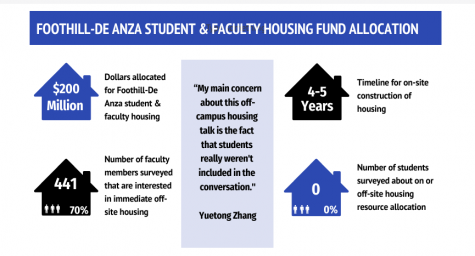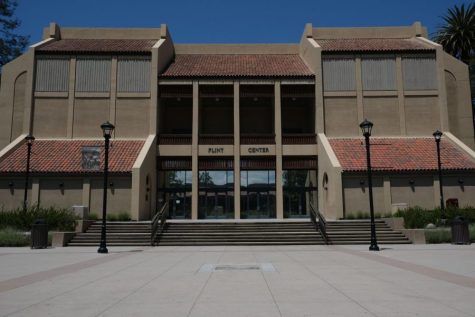De Anza College students fight to defeat housing insecurity
Speakers complained about the inaction in creating student housing on campus at the De Anza College Renter’s Rights Housing Town Hall on March 4.
Erika Flores said students become eligible for aid at De Anza when they submit a Free Application for Federal Student Aid, meet the eligibility requirements for the California College Promise, and are accepted as a client at West Valley Community Services, which provides financial housing assistance.
But some of the requirements are difficult for students to meet.
“The eligibility criteria that are really limiting our ability to give out these funds faster is that the student has to live in Cupertino,” Flores said. “A second speed bump that we’ve hit is that a lot of students who do live in Cupertino are not listed on the lease, for a lot of different reasons, where they live. And unfortunately that is one of the requirements.”
As students grapple with housing insecurity, Monique Oliveira discussed how to work with different policies to get financial relief.
“Tenants must (show) that they have been affected by COVID-19 by returning a self-declaration signed under penalty of perjury to their landlords,” she said.
This means you have 15 days from when the landlord notifies you to hand in the declaration stating why you cannot pay.
Kimberley Lam said there was a resolution endorsed by the De Anza Student Body senate to replace the Flint Center with affordable student housing in 2019, but the chancellor announced it was going to be an event center in January 2020.
“This was really problematic to us, because we had a lot of conversation about the Flint Center becoming housing for students.” said Lam, DASB Chair of Student Rights and Services.
She said that there was a lot of miscommunication around Measures G and H, district initiatives to improve affordability.
“The Measure G and H campaign began in the winter and spring of 2020”.
she said. “Within Measure G specifically there was … $200 to $300 million set aside for housing. Obviously, a lot of people really supported this.”
By June 2020, the final meeting of the academic year, no major decisions about housing had been made.
“When we came back in the fall, unfortunately work was continuing at the facilities, shared governance and task force with the main impression that this will be an event center,” Lam said.
For more information on housing assistance, visit De Anza’s Resources for Basic Needs.

My goals at La Voz are to expand my writing and learn more about practical journalism.







